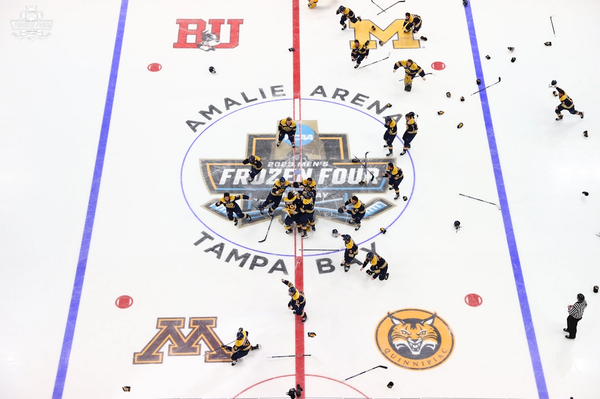
The GIST: The men’s game is a bit more populous than the women’s, with 152 programs across all divisions, including 60 DI teams across six conferences. Oh, and a whole lot of flow.
The powerhouses: Since the first ’ship in 1948, 23 different schools have taken the title, led by Michigan and Denver with nine apiece. And although there’s a clear geographic bias in the sport’s champs (all but Denver and Colorado College are in the Northeast or Midwest), there’s now more parity than ever before: In the last 10 seasons, there’ve been five first-time champs.
- Quinnipiac (pronounced KWI-nuh-PEE-ack) is the most recent, emotionally hoisting their first hardware after a dramatic overtime dub took down Minnesota this April. More like win-nipiac, eh?
- And while not a powerhouse yet, in the 2024–25 season, Tennessee State will become the first HBCU to offer collegiate men’s ice hockey, with plans to add a women’s program in the near future. HYFR.
Going pro: As discussed in our Summer School series, the NHL has some unique rules when it comes to drafting college students. The cream of the junior hockey crop are often drafted before even taking the college ice, though most don’t sign those pro contracts until after they develop in the NCAA and then leave school.
- In last month’s NHL Draft, 69 current or incoming NCAA players were selected, and all but nine are rising freshmen. But the star selection was overall No. 3 pick Adam Fantilli, who’s turning pro following a phenomenal freshman year at Michigan.
Enjoying this article? Want more?

Sign up for The GIST and receive the latest sports news straight to your inbox three times a week.




